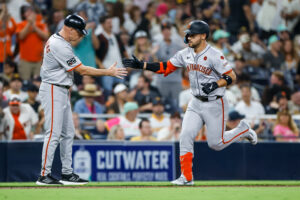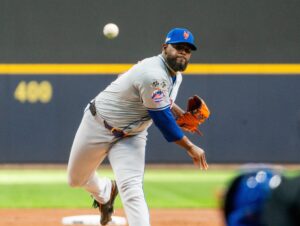Indians 2, Twins 0
The Cleveland Indians opened up a series on Wednesday against the Minnesota Twins. It was the first of four matchups between both teams.
Easily the biggest story of the game was right-hander Shane Bieber. Bieber recorded 13 strikeouts and really helped bolster his case to win the American League Cy Young Award this season. More on Bieber and what made him so effective below.
Given the dominance of Bieber, the Twins were shutout and ended up going 0-for-2 with runners in scoring position (RISP). Jose Berrios got the start for Minnesota and struggled overall going five innings while giving up two runs, two walks, a home run, and recording six strikeouts. Berrios threw a total of 96 pitches – 57 of which were strikes.
One performance worthy of recognition for Minnesota was left-hander Lewis Thorpe. Thorpe threw two innings in relief and recorded a strikeout while surrendering two hits.
In regard to the offense, the two runs Cleveland scored came on a Francisco Lindor home run to right-center field in the top of the third inning. Third baseman Jose Ramirez was the other run that scored. According to Statcast, Lindor’s home run came off the bat at 103 miles per hour and traveled 409 feet.
Shane “Not Justin” Bieber Dominates on the Mound
While Francisco Lindor continued to show his tremendous offensive skills, Shane Bieber deserves plenty of praise. Bieber’s four-seamer was the most effective pitch of the four that he threw tonight. His four-seamer resulted in 11 called strikes. Beyond that, it had an average exit velocity of 94.1 miles per hour.
Minnesota Twins third baseman Josh Donaldson had three strikeouts on the night. As shown here, Bieber attacked Donaldson with his four-seamer inside, outside, and in the strike zone itself. In total, he saw 19 pitches from Bieber. Of those, nine were the four-seamer, eight were the knuckle curve, and the other one was a changeup in the lower left-hand corner of the strike zone.
Furthermore, over his ten-year big league career, Donaldson has done well at the plate against four-seam fastballs. For example, last season he recorded 201 plate appearances where a four-seamer was thrown. Over that sample, he hit .273/.438/.623 with a 22.9% strikeout rate and a .287 Batting Average on Balls In Play (BABIP).
Over his entire big league career, the 34-year old has a lifetime batting average of .274 against four-seamers with a .393 on-base percentage and an Isolated Power (ISO) value of .298.
Based on tonight’s performance against Bieber, Donaldson struggled to produce offensively against the righty’s four-seamer. That is likely because of his whiff percentage at the top and on the right-hand side of the strike zone, as seen on this heat map based on 2019 data metrics. As shown on the map, the closer towards Donaldson’s body that a right-hander throws, the lower the chance of striking him out. On the other hand, the further out and the higher up a pitcher throws in the zone, the higher chance of getting him to whiff.
Final Thoughts
In the end, the Cleveland Indians starting rotation is the main storyline right now. As Mandy Bell pointed out on Twitter, it was once again another record outing for an Indians starter.
One last one (I think):
Shane Bieber’s 27 strikeouts in his first 2 starts are tied with Karl Spooner (1954) for the most strikeouts by a pitcher in his first 2 games of a season.
(h/t @SlangsOnSports)
— Mandy Bell (@MandyBell02) July 31, 2020
Heading into the season, the Indians starting rotation was very strong on paper. So far, it is living up to those high expectations. As it stands right now, the Indians have the second-best starting rotation based on ERA in all of baseball (1.53 over 47 innings of work).
Next up on the docket for Cleveland is the second game of the series Friday. The first pitch happens at 7:10 Eastern. Right-hander Mike Clevinger (0-0, 2.57 ERA) takes the bump for the Indians while right-hander Randy Dobnak (0-1, 2.25 ERA) gets the start for the Twins.
Main Image
Embed from Getty Images






